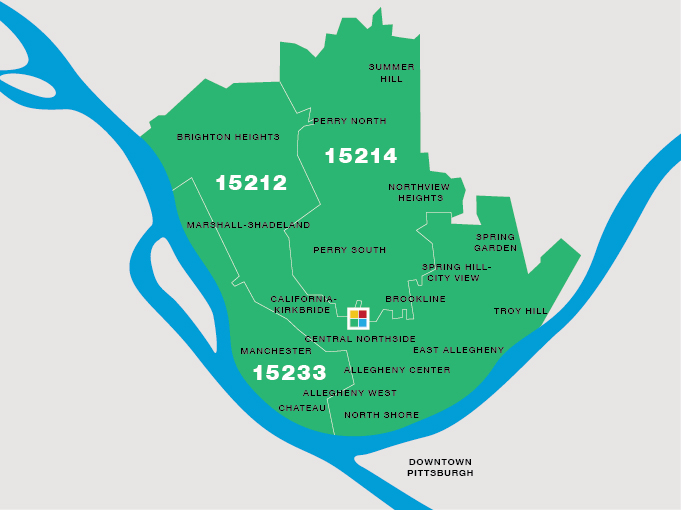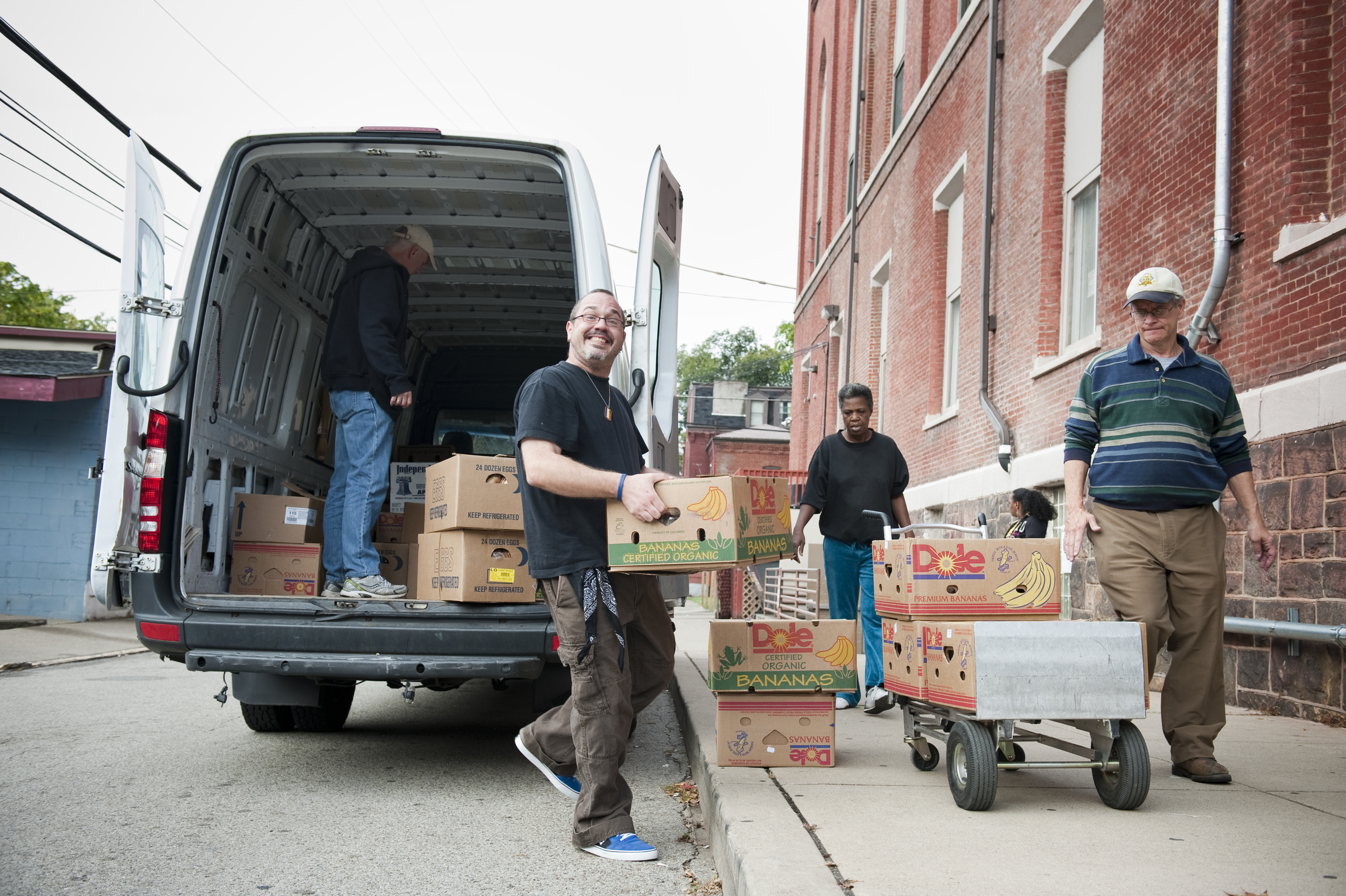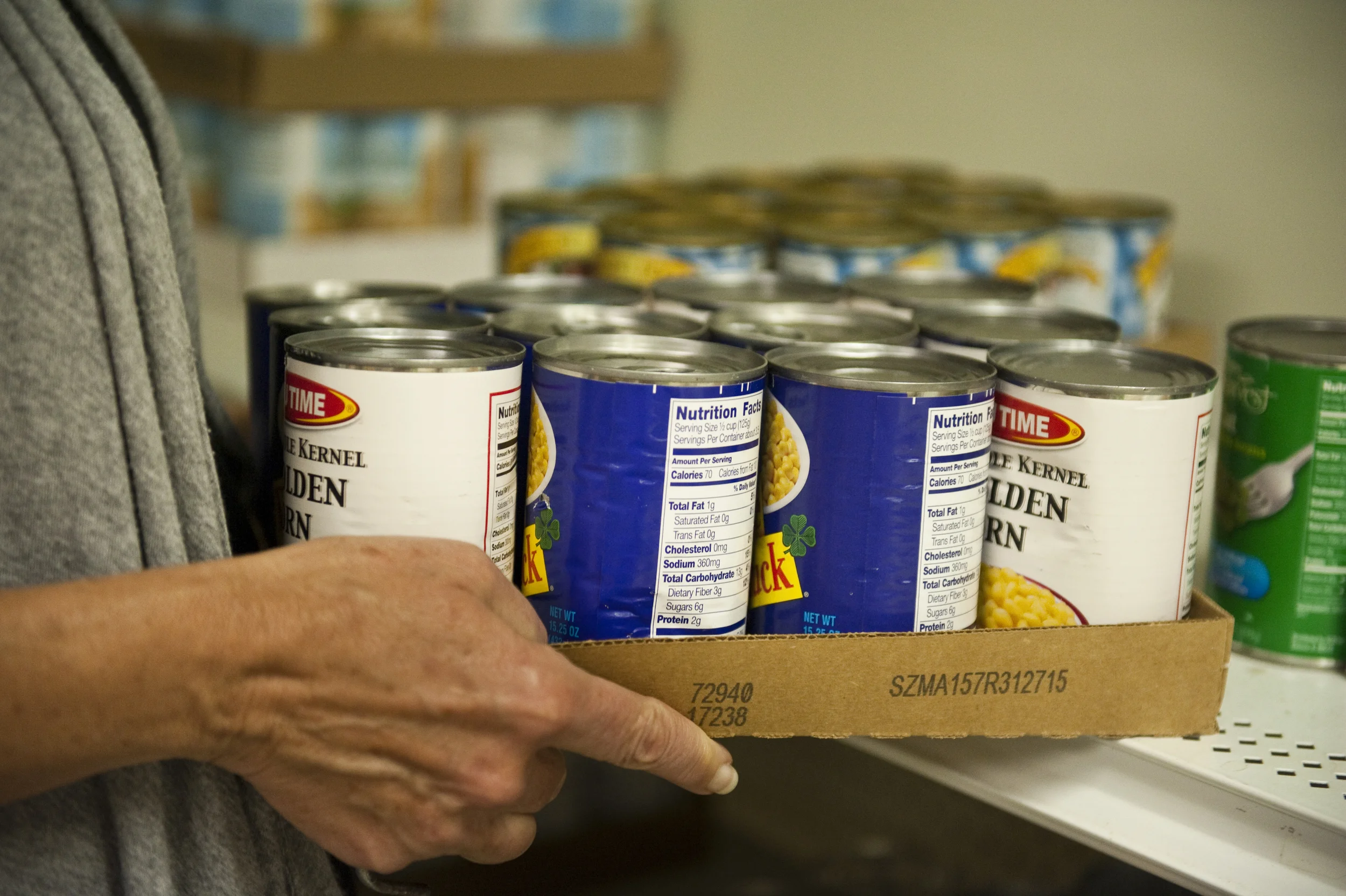
The rules allow one visit per month ...
For four to five weeks, a different group lines up each day — the rules allow them to “shop” at the pantry only once per month. They can collect about a week and a half’s worth of food during their visit.

They answer lots of questions ...
When the doors open, each person in line receives a number. When their number is called, a volunteer asks them questions about their address, income and family size. Visitors to the pantry carry envelopes stuffed with paperwork in order to provide the verification the volunteer needs before she can give them access to the pantry.

Only neighbors can use the pantry ...
To qualify for help, they must show documentation proving they have a home address in one of three zip codes: 15212, 15214 and 15233. The area covers all of the neighborhoods on the North Side. Those who are homeless must access different city resources; they cannot use the pantry.

Income & family size factor into how much they can take home ...
To qualify, an individual must earn less than $17,235 a year or $1,436 a month. A family of four must earn less than $35,325 or $2,944 a month. And they need to produce documentation showing the number of people they have living with them — if they have four children, for example, the volunteer needs to see paperwork verifying the children are part of the household.

Food is distributed by weight ...
The volunteer determines how many pounds of food each visitor to the pantry can collect of the premium items (staples such as canned goods). A one- to two-member family can collect 20 pounds during each month's visit; three- to four-member families can collect 25 pounds and five- to six-member families can collect 30 pounds of found.

They wait, then visit another volunteer ...
When it is their turn to entry the pantry area, a volunteer takes the receipt and assigns them a grocery cart. As they shop, they can return and add items to the cart, weighing them before they do. A volunteer tracks how much food they’ve collected and tells them when they have reached their allotment for the month.

It's a unique, innovative model ...
One of the only pantries in Pittsburgh to offer a supermarket-style experience for those it serves, the Northside pantry's setup is a more dignified approach that gives those in need a choice over what they receive.

Used plastic bags are always needed ...
Because the shopping area is a tight fit, the grocery carts must stay in place until the pantry visitors are ready to leave. To collect the food from the shelves they have to carry the items in their arms or rely on used plastic bags — an item the pantry is frequently short on.

Volunteers help the process ...
In addition to helping stock the shelves and ration donated food, volunteers help visitors to the pantry carry the food they've collected to cars or the bus stop.

Shelved food offers options ...
Food on the shelves that count toward their weight quota include canned and dry goods such as soups, macaroni and cheese and pasta. Particular items are limited to one or two per person when there are few to offer.

Fresh food, meats & dairy ...
They can collect additional food not counted toward their quota — items such as eggs, meat and fresh produce — at a table monitored by volunteers. The volunteers ration the items; the type and amount vary based on the donations the pantry has received and the expiration dates of those items.

And they help in other ways ...
On Monday mornings, volunteers also help unload a delivery truck from the Greater Pittsburgh Community Food Bank. About 80 percent of the food available in the pantry is delivered from the food bank. Some of the food delivered is free, but much of it is purchased, at a discount, by the pantry.

Shelves are stocked in many ways ...
Items ordered from the Greater Pittsburgh Community Food Bank include canned and boxed goods; the pantry can often buy five to seven such items for the price of one purchased direct at the store. But many other needed items must be purchased at full retail, if they are to be stocked.

Donations and cash both help ...
Both cash and donations of food and personal care products help the pantry. During its busiest months — September through December — donated items can be the most helpful, allowing pantry staff to quickly re-stock the shelves. During other months of the year, cash can be used to help plan orders in advance and stock the shelves appropriately for the upcoming weeks.

When in doubt ...
Toilet paper. It's always needed.















